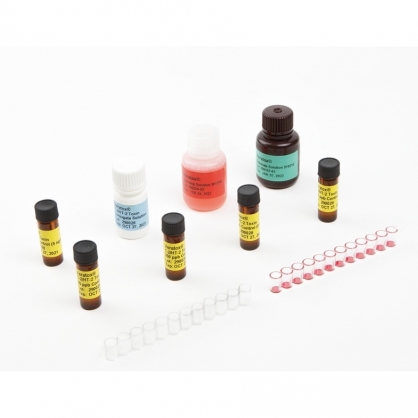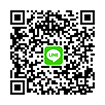- 原理
酵素連結免疫分析法Enzyme-linked immunosorbent assay (ELISA),利用抗原和抗體之間專一性鍵結的特性,並加入顯色酵素和酵素受質,利用顯色的深淺,對檢體進行檢測的分析方法。ELISA可使用標準曲線法 (standard curve) 進行定量,透過檢體的吸光值與標準品進行比對,即可得到檢體的對應濃度。競爭法(competitive ELISA) 一般用於分子量較小的抗原檢測,在抗體數量固定的塑膠孔盤上,加入可鍵結的酵素抗原及檢體抗原,兩種抗原皆會競爭塑膠孔盤上抗體鍵結,當檢體中抗原含量越多,顯色也就越淺
新月毒素(群)(trichothecenes)依照化學結構式的不同,可分成A、B、C、D四型:
1️⃣A型新月毒素➡️T-2 毒素(T-2 toxin, T-2) 、HT-2 毒素(HT-2 toxin, HT-2)
2️⃣B型新月毒素➡️嘔吐毒素(deoxynivalenol, DON)與雪腐鐮刀菌烯醇(nivalenol, NIV)
3️⃣C型新月毒素➡️巴豆素(crotocin)、燕茜毒素(baccharin)
4️⃣D型新月毒素➡️黑葡萄穗菌毒素(satratoxin)、漆斑菌素(roridin)
⚠️其中A、B、C型新月毒素皆由真菌(Fusarium spp.)產生⚠️
⚠️食品中污染物質及毒素衛生標準,尚未包含T-2 毒素、HT-2 毒素⚠️
↪️T-2毒素、HT-2毒素常見於穀物產品(如小麥、大麥、玉米、燕麥、米、黑麥及大豆...等),當T-2毒素進入動物體內之後,也可能被代謝成HT-2毒素等多種代謝產物。
↪️此二種毒素含有乙醯基(acetyl group)的結構,此種結構會降低動物體內粒線體電子傳遞鏈的活性,而形成過多的自由基 (free radicals),繼而造成脂質過氧化,並影響動物細胞膜之完整性,最後造成細胞壞死(necrosis)
- 結果判讀
極限:
偵測極限(limit of detection, LOD): 10 ppb
定量極限(limit of quantification, LOQ):25 ppb
偵測範圍:25-250 ppb(樣品超過250ppb需重新稀釋及測量)
- 樣品準備和萃取(SAMPLE PREPARATION AND EXTRACTION)
The sample to be tested should be collected according to accepted sampling techniques. The sample should be ground and thoroughly mixed prior to proceeding with the extraction. Store samples at 2–8oC (35–46oF) until analyzed. NOTE: If using Neogen’s Mycotoxin Extraction Kit, follow the instructions in that kit for the extraction procedure. If preparing your own extraction solution, continue with the instructions that follow.
1. If not using Neogen’s prepared solution, prepare a 70% methanol solution by mixing 7 parts ACS grade methanol with 3 parts deionized or distilled water for each sample to be tested.
2. Obtain a representative sample. Grind the entire sample so at least 75% of the ground material passes through a 20 mesh sieve, the particle size of a fine instant coffee.
3. Extract at a ratio of 1 part sample with 5 parts 70% methanol. EXAMPLE: Add 5 g of ground sample to 25 mL of 70% methanol/water and shake vigorously for 3 minutes, or blend for 2 minutes.
4. Filter the extract by pouring at least 5 mL through a Whatman no. 1 filter (or Neogen filter syringe) and collecting the filtrate as a sample.
5. Dilute the filtrate 1:1 (e.g., 1 mL in 1 mL) with deionized or distilled water and mix.
6. The sample is now ready for testing without further preparation.
- 定量-操作流程(TEST PROCEDURE)
Allow reagents to warm to room temperature 18-30oC (64-86oF) prior to use.
1. Remove 1 red-marked mixing well for each sample to be tested plus 5 red-marked wells for controls, and place in the well holder.
2. Remove an equal number of antibody-coated wells. Return antibody wells that will not be used immediately to the foil pack with desiccant and reseal the pack to protect the antibody. Mark one end of strip with a “1”, and place strip in the well holder with the marked end on the left.
3. Mix each reagent by swirling the reagent bottle prior to use.
4. Place 100 µL of conjugate from the blue-labeled bottle in each red-marked mixing well.
5. Using a new pipette tip for each, transfer 100 µL of controls and samples to the red-marked mixing wells as shown below:
6. Using a 12-channel pipettor, mix the liquid in the wells by pipetting it up and down 3 times. Transfer 100 µL to the antibody-coated wells. Incubate 5 minutes at room temperature 18–30°C (64–86°F), mixing for the first 10–20 seconds by sliding back and forth on a flat surface. Discard the redmarked mixing wells.0 25 50 100 250 S1 S2 S3 S4 S5 S6 S7 strip 1 S8 S9 S10 S11 S12 S13 S14 S15 S16 S17 S18 S19 strip 2
7. The initial reaction is now complete. Shake out the contents of the antibody wells.
8. Fill each antibody well with deionized or distilled water and dump them out. Repeat this step 5 times, then turn the wells upside down and tap out on a paper towel until the remaining water has been removed.
9. Pipette the needed volume of substrate from the green-labeled bottle into the green-labeled reagent boat and, with new tips, pipette 100 µL of substrate into the wells. Incubate 5 minutes at room temperature 18–30°C (64–86°F), mixing for the first 10–20 seconds by sliding back and forth on a flat surface. Discard remaining substrate and rinse the reagent boat with water.
10. Pipette Red Stop solution from the red-labeled bottle (same volume as prepared for substrate) into the red-labeled reagent boat. Using the same pipette tips as were used to dispense substrate, add 100 µL Red Stop to each well and mix by sliding back and forth on a flat surface. Discard the tips.
11. Wipe the bottom of the microwells with a dry cloth or towel and read in a microwell reader using a 650 nm filter. Air bubbles should be eliminated, as they could affect analytical results. Results should be read within 20 minutes after the addition of Red Stop.
12. Read and calculate results using Neogen’s Stat Fax microwell reader, or equivalent. If using an EL301 reader or other strip/plate reader, calculate results using Neogen’s Veratox software for Windows.
- 掃描-操作流程(TEST PROCEDURE – FOR SCREENING)
Allow reagents to warm to room temperature, 18-30oC (64-86oF), prior to use.
1. Remove 1 red-marked mixing well for each sample to be tested plus 1 red-marked well for the control, and place in the well holder.
2. Remove an equal number of antibody-coated wells. Return antibody wells that will not be used immediately to the foil pack with desiccant and reseal the pack to protect the antibody. Mark one end of strip with a “1”, and place strip in the well holder with the marked end on the left.
3. Mix each reagent by swirling the reagent bottle prior to use.
4. Place 100 µL of conjugate from the blue-labeled bottle in each red-marked mixing well.
5. Choose one control level to screen samples against for each test performed. Using a new pipette tip for each, transfer 100 µL of the samples and chosen control to the red-marked mixing wells as shown below. Thoroughly mix the sample and control with the conjugate as you add them to the well by depressing the plunger 5 times. Do not use more than 6 wells at one time.
6. Using a new tip for each, transfer 100 µL from each mixing well to the corresponding antibodycoated well. Mix by sliding the microwell holder back and forth on a flat surface for 10–20 seconds without splashing the reagents from the wells. Incubate 5 minutes at room temperature 18–30°C (64–86°F), mixing for the first 10–20 seconds by sliding back and forth on a flat surface.control S1 S2 S3 S4 S5
7. The initial reaction is now complete. Shake out the contents of the antibody wells.
8. Fill each antibody well with distilled or deionized water and dump them out. Repeat this step 5 times, then turn the wells upside down and tap out on a paper towel until the remaining water has been removed.
9. Pipette 100 µL of substrate into each well. Incubate 5 minutes at room temperature 18–30°C (64–86°F), mixing for the first 10–20 seconds by sliding back and forth on a flat surface.
10. Pipette 100 µL Red Stop to each well and mix by sliding back and forth on a flat surface. Discard tip.
11. Wipe the bottom of the microwells with a dry cloth or towel.
12. Microwells may be read visually or using a 650 nm filter. If the sample well is blue or more blue than the control well, the sample contains less toxin than the control. If the sample well shows less blue color (more red color) than the control, the sample contains more toxin than the control. For optimum observation of color differences, place the wells on a white surface and read looking down through the solution.
商品特色
商品規格
- 商品規格(48個檢測反應)
1️⃣48 antibody-coated wells
2️⃣48 red-marked mixing wells
3️⃣05 yellow-labeled bottles of 0, 25, 50, 100, and 250 ppb T-2 controls
4️⃣01 blue-labeled bottle of HT-2 toxin HRP conjugate solution
5️⃣01 green-labeled bottle of K-Blue® Substrate solution
6️⃣01 red-labeled bottle of Red Stop Solution


